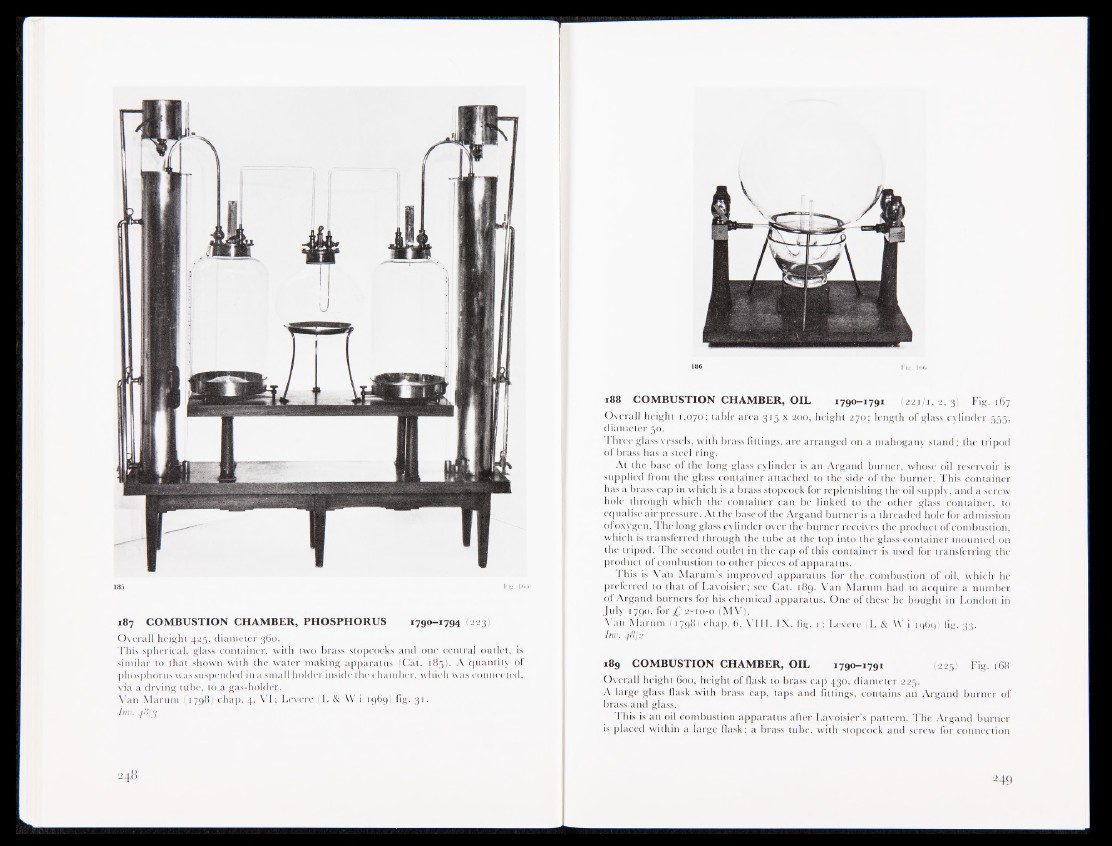
187 COMBUSTION CHAMBER, PHOSPHORUS X790 -I794 (223I
Overall height 425, diameter 360.
This spherical, glass container, with two brass stopcocks and one central outlet, is
similar to that shown with the water making apparatus (Cat. 185). A quantity of
phosphorus was suspended in a small holder inside the chamber, which was connected,
via a drying tube, to a gas-holder.
Van Marum (1798) chap. 4, VI; Levere (L & W i 1969) fig. 31.
186
188 COMBUSTION CHAMBER, OIL 1790—1791 (221/1, 2, 3) Fig. 167
Overall height 1,070; table area 315 x 200, height 270; length of glass cylinder 555,
diameter 50.
I hree glass vessels, with brass fittings, are arranged on a mahogany stand; the tripod
of brass has a steel ring.
At the base of the long glass cylinder is an Argand burner, whose oil reservoir is
supplied from the glass container attached to the side of the burner. This container
has a brass cap in which is a brass stopcock for replenishing the oil supply, and a screw
hole through which the container can be linked to the other glass container, to
equalise air pressure. At the base of the Argand burner is a threaded hole for admission
of oxygen. The long glass cylinder over the burner receives the product of combustion,
which is transferred through the tube at the top into the glass container mounted on
the tripod- The second outlet in the cap of this container is used for transferring the
product of combustion to other pieces of apparatus.
This is Van Marum’s improved apparatus for the combustion of oil, which he
preferred to that of Lavoisier; see Gat. 189. Van Marum had to acquire a number
of Argand burners for his chemical apparatus. One of these he bought in London in
July 1790, for £ 2-10-0 (MV|„
Van Marum (1798) chap. 6, VIII. IX, fig. 1 ; Levere (L & W i 1969) fig. 33.
Inv. 48/2
189 COMBUSTION CHAMBER, OIL 1790-1791 (225) Fig. 168
Overall height 600, height of flask to brass cap 430, diameter 225.
A large glass flask with brass cap, taps and fittings, contains an Argand burner of
brass and glass.
This is an oil combustion apparatus after Lavoisier’s pattern. The Argand burner
is placed within a large flask; a brass tube, with stopcock and screw for connection